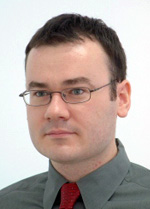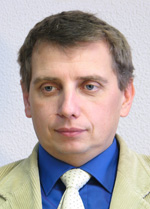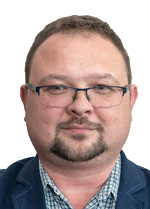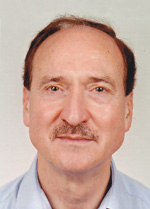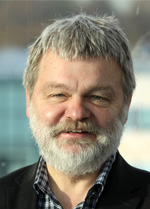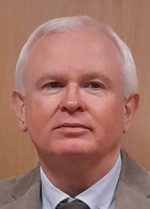E-pismo dla elektryków i elektroników
AUTOMATYKA, ELEKTRYKA, ZAKŁÓCENIA
Vol. 7, Nr 4(26) 2016
Moce i kompensacja w obwodach z odkształconymi i niesymetrycznymi przebiegami prądu i napięcia. Część 10. Historia rozwoju teorii Składowych Fizycznych Prądów (CPC)
Powers And Compensationin Circuits With Nonsinusoidal and Asymmetrical Voltages and Currents. Part 10. Development history of the Currents’ Physical Components (CPC) - based power theory
prof. dr hab. inż. Leszek S. CZARNECKI
Abstract
Currents’ Physical Components (CPC) – based power theory of electrical systems with nonsinusoidal and asymmetrical voltages and currents is a theory which explains power related physical phenomena that contribute to the reduction of effectiveness of the energy transfer in distribution systems. It was developed in parallel to other attempts aimed at explanation and description of power properties of electrical circuits and it is currently the most advanced concept of the power theory. This paper puts the development of the CPC in a broader context of the power theory development. It also summarizes contribution of various schools of power theory to its development.
Streszczenie
Teoria składowych fizycznych prądów (ang.: currents’ physical components – CPC) i oparta na niej teoria mocy obwodów z niesinusoidalnymi i niesymetrycznymi przebiegami prądów i napięć stanowią teorię mocy, która wyjaśnia zjawiska fizyczne redukujące skuteczność przesyłu energii w systemach rozdzielczych. Powstawała ona równolegle do innych prób opisu właściwości energetycznych obwodów elektrycznych i jest obecnie najbardziej zaawansowaną koncepcją teorii mocy. Niniejszy artykuł osadza teorię składowych fizycznych prądów w szerszym kontekście rozwoju teorii mocy. Podsumowuje on także wkład różnych szkół w rozwój teorii mocy obwodów elektrycznych.
Keywords
power theory, compensation, nonsinusoidal voltages
Słowa kluczowe
teoria mocy, compensacja, niesinusoidalne prądy
Rys. / Fig.
Bibliografia / Bilbiography
[1] Ch.P. Steinmetz, “Does phase displacement occur in the current of electric arcs?” (in German), ETZ, 587, 1892.
[2] Ch.P. Steinmetz, "Theory and calculation of electrical apparatur," McGraw-Hill Book Comp., New York, 1917.
[3] W.V. Lyon, “Reactive power and unbalanced circuits”, Electrical World, pp. 1417–1420, 1920.
[4] A.I.E.E. Committee, “Apparent power in three-phase systems”, Transactions of A.I.E.E., Vol. 39, pp. 1450–1455, 1920.
[5] F. Buchholz, “Die Drehstromscheinleistung bei Unglaichmaβger Belastung der drei Zweige,” Licht und Kraft, pp. 9–11, 1922.
[6] M.A. Illovici, “Definition et mesure de la puissance et de l'energie reactives”, Bull. Soc. Franc. Electriciens, 1925.
[7] C.I. Budeanu, “Puissances reactives et fictives,” Institut Romain de l'Energie, Bucharest, 1927.
[8] E. Weber, “Die elektrische Leistung in allgemeinen Wechselstromkreis”, ETZ, p. 1547, 1929.
[9] S. Fryze, “Active, reactive and apparent power in circuts with nonsinusoidal voltages and currents”, Przegląd Elektrotechniczny, z. 7, pp. 193–203, z. 8, pp. 225–234, 1931, z. 22, pp. 673–676, 1932.
[10]W. Quade, “Über Wechselstrome mit beliebiger Kurvenform in Dreiphasensystemen”, Archiv fur Elektr., vol. 28, pp. 798–809, 1934.
[11]H.L. Curtis, F.B. Silsbee, “Definitions of power and related quantities”, Transactions of AIEE, Vol. 54, pp. 394–404, 1935.
[12]F. Emde, “Scheinleistung eines nicht sinusformigen Drehstromes”, Elektrotechnik und Machinen, pp. 555–565, 1937.
[13]I. Rosenzweig, “Symbolic multidimensional approach to analysis of multiphase systems” (in Polish) Czasopismo Techniczne, pp. 6–11, 1939.
[14]V.N. Nedelcu, “Die enheitliche Leistungstheorie der unsymmetrischen mehrwelligen Mehrphasensysteme”, ETZ-A, no. 5, pp. 153–157, 1963.
[15]M. Depenbrock, “Blind- und Scheinleistung in einphasing gespeisten Netzwerken”, ETZ-A,, Bd. 85, F.13, pp. 385–391, 1964.
[16]Z. Nowomiejski, Z. Cichowska, “Unbalanced three-phase systems” (in Polish), Scientific Letters of Gliwice Univ. of Techno-logy, ELEKTRYKA, no. 17, pp. 25–76, 1964.
[17]Wechselstromgrossen, 303–310, 1972.
[18]W. Shepherd, P. Zakikhani, “Suggested definition of reactive power for nonsinusoidal systems,” Proc. IEE, vol. 119, no. 9, pp. 1361–1362, 1972.
[19]M. Depenbrock, “Wirk- und Blindleistung,” ETG-Fachtagung "Blindleistung", Aachen 1979.
[20]N.L. Kusters, W.J.M. Moore, “On the definition of reactive power under nonsinusoidal conditions,” IEEE Trans. Pow. Appl. Syst., vol. PAS-99, no. 3, pp. 1845–1854, 1980.
[21]International Electrotechnical Commission, (1979), Techn. Committee No. 25, Working Group 7, Report: “Reactive power and distortion power”, doc. no. 25, 113 (Secr.).
[22]L.S. Czarnecki, “Additional discussion to "On the definition of reactive power under nonsinusoidal conditions," IEEE Trans. on Power and Syst., vol. PAS-102, no. 4, pp. 1023–1024, 1983.
[23]L.S. Czarnecki, “Considerations on the reactive power in nonsinusoidal situations,” IEEE Trans. on Instr. and Measurements, vol. IM-34, no. 3, pp. 399–404, 1984.
[24]H. Akagi, Y. Kanazawa, A. Nabae, “Instantaneous reactive power compensators comprising switching devices without Energy Storage Components,” IEEE Trans. Ind. Appl, vol. IA-20, no. 3, pp. 625–630, 1984.
[25]S. Fryze, “Theorethical and physical fundamentals for the active, reactive and apparemt power definitions in multi-phase systems with distorted voltages and currents” (in Polish), Zeszyty Naukowe Politechniki Śląskiej ELEKTRYKA, nr 100, pp. 29–46, post-humos publ., 1985.
[26]K. Koch, “Bestimmung von Groβen in Mehr-Leitr Systemen“, ETZ Archiv, vol. 8, no. 10, pp. 313–318, 1986.
[27]L.S. Czarnecki, “What is wrong with the Budeanu concept of reactive and distortion powers and why it should be aban-doned,” IEEE Trans. Instr. Meas., vol. IM-36, No. 3, pp. 834–837, 1987.
[28]L.S. Czarnecki, “Orthogonal decomposition of the current in a three-phase non-linear asymmetrical circuit with nonsinu-soidal voltage,” IEEE Trans. Instr. Meas., vol. IM-37, no. 1, pp. 30–34, 1988.
[29]L.S. Czarnecki, “Reactive and unbalanced currents compensation in three-phase circuits under nonsinusoidal conditions,” IEEE Trans. IM, vol. Instr. Meas., IM-38, no. 3, pp. 754–459, 1989.
[30]A.E. Emanuel, “Powers in nonsinusoidal situations. A review of definitions and physical meanings”, IEEE Transations on Pow. Del, vol. 5, no. 3, pp. 1377–1389, 1990.
[31]L.S. Czarnecki, T. Swietlicki, “Powers in nonsinusoidal networks, their analysis, interpretation and measurement,” IEEE Trans. Instr. Measur., vol. Instr. Meas., IM-39, no. 2, 340–344, 1990.
[32]L.S. Czarnecki, “Scattered and reactive current, voltage, and power in circuits with nonsinusoidal waveforms and their compensation,” IEEE Trans. Instr. Meas., vol. 40, no. 3, pp. 563–567, 1991.
[33]L.S. Czarnecki, “Minimization of unbalanced and reactive currents in three-phase asymmetrical circuits with nonsinusoidal voltage,” Proc. IEE Pt. B, 139, no. 4, pp. 347–354, 1992.
[34]M. Depenbrock, “The FBD-method, a generalized applicable tool for analyzing power relations” IEEE Trans. on Power Del., vol. 8, no. 2, pp. 381–387, 1993.
[35]L.S. Czarnecki, "Dynamic, power quality oriented approach to theory and compensation of asymmetrical systems under nonsinusoidal conditions", European Trans. on Electric Power, ETEP, vol. 5, pp. 347–358, Sept./Oct. 1994.
[36]G. Superti-Furga, “Searching for generalization of the reactive power – a proposal”, European Transactions on Electrical Power Engineering, ETEP, vol. 4, no. 5, pp. 411–420, 1994.
[37]L.S. Czarnecki, "Power theory of electric circuits: common data base of power related phenomena and properties”, Europ. Trans. on Electrical Power, ETEP, vol. 4, no. 5, pp. 491–408, 1994.
[38]L.S. Czarnecki, S.M. Hsu, G. Chen, “Adaptive balancing compensator,” IEEE Trans. on Power Delivery, vol. 10, no. 3, pp. 1663–1669, July 1995.
[39]F.Z. Peng; J.S. Lai, "Generalized instantaneous reactive power theory for three-phase power systems," IEEE Transactions on Instrum. and Meas., vol. 45, no. 1, pp. 293, 297, Feb. 1996.
[40]L.S. Czarnecki, G. Chen, Z. Staroszczyk, “Application of running quantities for control of adaptive hybrid compensator,” European Trans. on Electrical Power, ETEP, vol. 6, no. 5, pp. 337–344, Sept./Oct. 1996.
[41]L.S. Czarnecki, “Budeanu and Fryze: two frameworks for Interpreting power properties of circuits with nonsinusoidal voltages and currents,” Archiv fur Elektrot., 81, no. 2, pp. 5–15, 1997.
[42]The New IEEE Standard Dictionary of Electrical and Electronics Terms, IEEE Inc., New York, 1997.
[43]W. le Roux, J.D. vanWyk, “Correspondence and difference between the FBD and Czarnecki current decomposition methods for linear loads”, European Transactions on Electrical Power Engineering, ETEP, vol. 8, no. 5, pp. 329–336, 1998.
[44]L.S. Czarnecki, “Energy flow and power phenomena in electrical circuits: illusions and reality,” Archiv fur Elektrotechnik, 82, no. 4, pp. 10–15, 1999.
[45]Z. Cekareski, A.E. Emanuel, “Pointing Vector and the power quality of electric energy”, Europ. Trans. on Electrical Power Eng., ETEP, vol. 11, no. 6, pp. 375–382, 2001.
[46]P. Tenti, P. Mattavelli, “A time-domain approach to power terms definitions under non-sinusoidal conditions,” 6th Int. Workshop on Power Definitions and Measurement under Non-Sinusoidal Conditions, Milan, Italy, 2003.
[47]L.S. Czarnecki, “On some misinterpretations of the Instantaneous Reactive Power p-q Theory,” IEEE Trans. on Power Electronics, vol. 19, no. 3, pp. 828–836, 2004.
[48]A. Firlit, “Current’s Physical Components Theory and p-q Power Theory in the control of the three-phase shunt active power filter,” 7th Int. Workshop on Power Definitions and Meas. under Non-Sinusoidal Conditions, Cagliari, Italy, 2006.
[49]L.S. Czarnecki, “Could power properties of three-phase systems be described in terms of the Poynting Vector?” IEEE Trans. on Power Delivery, 21, no. 1, 339–344, 2006.
[50]P.E. Sutherland, “On the definition of power in an electrical system”, IEEE Trans. on Pow. Del., vol. 22, pp. 1100–1107, 2007.
[51]W.G. Morsi, M.E. El-Hawary, “Defining power components in nonsinusoidal unbalanced polyphase systems: the issues”, IEEE Trans. on Power Delivery, vol. 22, no. 4, pp. 2428–2438, 2007.
[52]H.L. Ginn, G. Chen, “Switching compensator control strategy based on CPC power theory”, Proc. of the International School of Nonsinusoidal Currents and Compensation, (ISNCC), Łagów 2008.
[53]L.S. Czarnecki, “Effect of supply voltage harmonics on IRP-based switching compensator control,” IEEE Trans. on Power Electronics, vol. 24, no. 2, pp. 483–488, 2009.
[54]L.F. Monteneiro, J.L. Alfonso, J.G. Pinto, E.M. Watanabe, H. Akagi, M. Aredes, “Compensation algorithms based on the p-q and CPC theories for switching compensators in micro-grids”, Proc. of COBEP 09 Power Electronics Conference, Brazilian DOI: 10.1109/ COCEP.2009.5347593, pp. 32–40, 2009.
[55]L.S. Czarnecki, “Effect of supply voltage asymmetry on IRP p-q - based switching compensator control,“ IET Proc. on Power Electronics, vol. 3, no. 1, pp. 11–17, 2010.
[56]L.S. Czarnecki, “Powers and compensation in circuits with nosinusoidal voltages and currents, Part 2. Current’s Physical Components and compensation in single-phase time-invariant loads,” Automatyka, Elektryka, Zakłócenia, www.elektro-innowacje.pl, vol. 1, nr 2, pp. 71–79, 2010.
[57]L.S. Czarnecki, “Recollections on Professor Fryze and reflections on his place in the power theory development” Przegląd Elektrotechniczny, R. 87, nr 1, pp. 123–128, 2011.
[58]L.S. Czarnecki, “Powers and compensation in circuits with nosinusoidal voltages and currents, Part 3. Current’s Physical Components and compensation in single-phase with Harmonic Generating Loads (HGL),” Automatyka, Elektryka, Zakłócenia, www.elektro-innowacje.pl, vol. 1, nr 3, pp. 44–54, 2011.
[59]L.S. Czarnecki, “Powers and compensation in circuits with nosinusoidal voltages and currents, Part 4. Current’s Physical Components and compensation three-phase unbalanced systems in sinusoidal conditions,” Automatyka, Elektryka, Zakłócenia, www.elektro-innowacje.pl, vol. 1, nr 4, pp. 57–65, 2011.
[60]L.S. Czarnecki, “Powers and compensation in circuits with nosinusoidal voltages and currents, Part 6. Compensation of three-phase unbalanced systems in sinusoidal conditions,” www.elektro-innowacje.pl, Automatyka, Elektryka, Zakłócenia, vol. 6, no. 4, pp. 51–57, 2011.
[61]L.S. Czarnecki, “Working, reflected and detrimental active powers,” IET on Generation, Transmission and Distribution, vol. 6, no. 3, pp. 223–239, 2012.
[62]L.S. Czarnecki, “Constraints of the Instantaneous Reactive Power p-q Theory”, IET Power Electr., vol. 7, no. 9, pp. 2201–2208, 2014.
[63]L.S. Czarnecki, “Powers and compensation in circuits with nosinusoidal voltages and currents, Part 6. Powers in Linear Three-Phase Systems with Neutral Conductor”, www.elektro-innowacje.pl, Automatyka, Elektryka, Zakłócenia, nr 1, pp. 48–58, 2014.
[64]L.S. Czarnecki, “Powers and compensation in circuits with nosinusoidal voltages and currents, Part 7. Strategies of switching compensator control”, www.elektro-innowacje.pl, Automatyka, Elektryka, Zakłócenia, vol. 4, nr 2, pp. 44–54, 2014.
[65]L.S. Czarnecki, “Critical comments on the Conservative Power Theory (CPT)”, Proc. of Int. School on Nonsinusoidal Currents and Compensation, (ISNCC), Łagów 2015.
[66]L.S. Czarnecki, P. Bhattarai, “Powers and compensation in circuits with nosinusoidal voltages and currents, Part 8. “Powers and reactive compensation at asymmetrical supply voltage”, www.elektro-innowacje.pl, Automatyka, Elektryka, Zakłócenia, 2015.
[67]L.S. Czarnecki, “Powers and compensation in circuits with nosinusoidal voltages and currents, Part 9. Misinterpretation of power properties of electrical circuits”, www.elektro-innowacje.pl, Automatyka, Elektryka, Zakłócenia, vol. 6, nr 3(21), pp. 6–17, 2015.
[68]L.S. Czarnecki, P.M. Haley, “Unbalanced power in four-wire systems and its reactive compensation”, IEEE Trans. on Power Delivery, vol. 30, no. 1, pp. 53–63, Feb. 2015.
[69]L.S. Czarnecki, P.M. Haley, “Power properties of four-wire systems at nonsinusoidal supply voltage,” IEEE Trans. on Power Delivery, vol. 31, no. 2, pp. 513–521, 2016.
[70]L.S. Czarnecki, P. Bhattarai, “Currents’ Physical Components of unbalanced three-phase LTI loads at asymmetrical nonsinu-soidal supply voltage”, Proc. of Int. School on Nonsinusoidal Currents and Compensation, (ISNCC), Łagów 2015.
[71]A.R. Izaguirre, M.E. Macias, F. Martell, “Accurate CPC power analysis under extreme EAF’s distortion conditions”, Proc. of Int. School on Nonsinusoidal Currents and Compensation, (SNCC), Łagów 2015.
[72]L.S. Czarnecki, “What is wrong with the Conservative Power Theory (CPT)”, Proc. of Int. Conf. on Applied and Theoretical Electr., ICATE, Craiova, Romania 2016.
[73]L.S. Czarnecki, P. Bhattarai, “A method of calculation of LC parameters of balancing compensators for AC arc furnaces”, to be printed in IEEE Trans. on Power Delivery, 2016.


